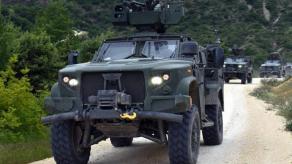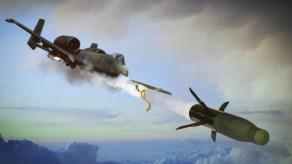The story of how Ukraine handed over eight Tu-160s, three Tu-95MSs, and 575 Kh-55 missiles to russia in 1999 as payment for gas debt is usually mentioned as an example of the lost potential that russia is exploiting now.
Earlier we wrote that Ukraine was forced to abandon the Tu-160. Now we want to recall another story. By 2011, Ukraine decommissioned and disposed of the Elbrus missile system, also known as Scud, which included a stockpile of 185 missiles and 50 launchers.
Read more: russia Claims Destruction of AMX-10P in Kursk Oblast, Despite France Not Supplying Such Vehicles to Ukraine
The R-17 missiles the Scud system had a range of up to 360 kilometers, with a warhead of up to 900 kilograms. It could be a perfect tool for striking large military targets in russia, such as ammunition arsenals or airfields. It is quite logical to think that this is the type of missile system that Ukraine is currently lacking.
It is worth recalling the conditions under which these weapons were decommissioned. According to publicly available information, training on these systems took place between 1997 and 2001 at training grounds in Crimea. Then these missiles and launchers were placed in storage.
The R-17 ballistic missile to the Scud system was fueled with toxic fuel containing Mélange (liquid oxidant rocket propellant component). This posed a danger to the crew of these systems.

Another problem was that these missile systems could only be maintained with the help of russia. There is a certain dissonance in involving the russian federation in the maintenance of weapons that are necessary to deter russia.
In addition, the foreign policy environment was not favorable either. The United States has made systematic efforts to eliminate short-range missiles in Europe. However, as part of these efforts, not only Ukrainian Elbrus systems were destroyed, but also Soviet Oka systems in service with the Czech Republic, Slovakia, and Bulgaria.
It is also worth recalling the example of Armenia, which in 2020, before the war over Karabakh, had 20 missiles and eight Scud launchers, making it the only operator of such a missile system in the entire post-Soviet space. Armenians were able to keep this systems in operation only with direct assistance from russia.

Therefore, we can draw the following conclusion: we should not even talk about the lost potential, but rather about why Ukraine failed to create a replacement for what was lost. Now Ukraine really lacks its own ballistic missiles to strike russia, but there is hope that this issue will be resolved in the relatively near future.
Earlier Defense Express reported that Kh-55 missile found in Kyiv had shed light on russian tactics behind November 28 attack.
Read more: What Else russian Defense Minister Belousov Came to Ask From North Korea














